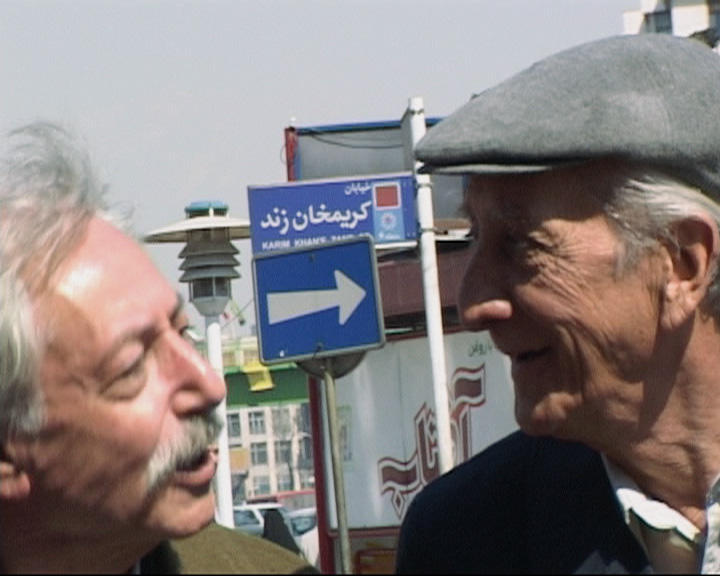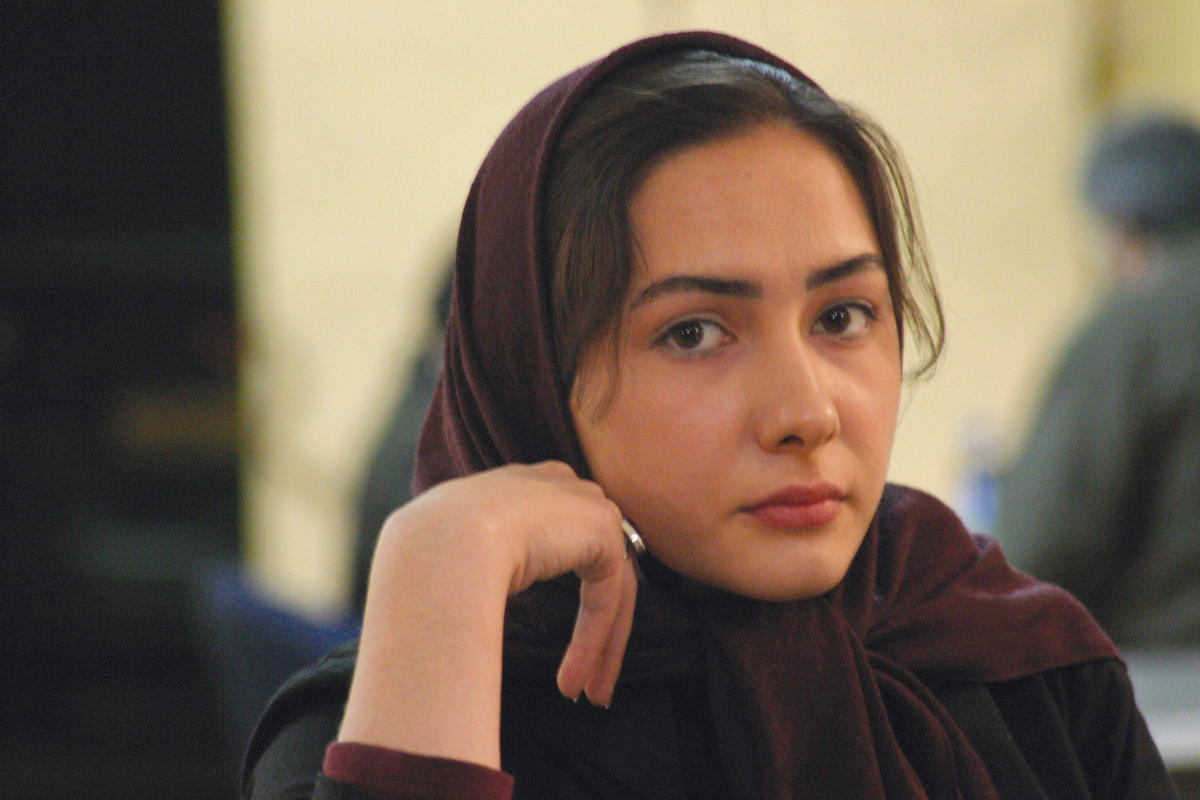
In the time of John Ford, everyone who went to the desert said it was down to John Ford; now if anyone gets in a car in Tehran, everyone says it’s because of Kiarostami.
—Niki Karimi, May 2005
There were films before Abbas Kiarostami’s Ten that made use of Tehran’s roads as a backdrop, but the legendary director’s 2002 picture honed the idea of the vehicle as public space. Ten’s monumental influence, especially its focus on the possibility (or impossibility) of frank discussion and contemporary relationships, has been second to none. In addition to Niki Karimi’s One Night, which played at this year’s Cannes Film Festival and is now due for release in Iran, Mania Akbari’s 20 Fingers and Mani Haghighi’s Abadan both have their warts-and-all characters continually navigating their way around Tehran. In the wake of Ten, these three young directors have broken with Iranian cinematic tradition in their portrayal of onscreen relationships.
Since the end of the Iran-Iraq war there have been numerous attempts to ornament Tehran’s concrete sprawl. One former mayor even took it upon himself to landscape more than eight hundred parks in the city. But rather than present the urban experience as functional or beautiful, a number of young directors have preferred to delve “under the skin of the city” (to quote the title of Rakshan Bani Etemad’s 2001 feature about working-class struggle). In these films, Tehran is a living organism; the directors have used its interstitial, emblematic vehicles — cars, taxis and motorcycles to create a sense of private in the public.
Perhaps the moving vehicle muddles the supposed dialectical relationship between “true” feelings and the social masks that people wear, questioning the unbending belief — shared by mullahs and journalists alike — that the biggest rift in Iranian codes of conduct is between the authentic inside and the formal exterior. In Abadan, for instance, the interiors of cars allow men to reflect, laugh, swear and take off their public masks. Playful inside the car, they become serious once outside, under the gaze of the city. Haghighi thereby marks as truly universal the experience shared by anyone who has ever bonded to the mysterious, intimate allure of a car stereo. In One Night, men drive while discussing their relationships and secrets with a female stranger. And in 20 Fingers, a couple argue over intimate details while traversing the city. In both Abadan and 20 Fingers, it’s motorcycles that allow for uninhibited ease of movement. Abadan’s aging central characters appear to float around the city, through blocks and stops, bypassing its billboards, imposing buildings, and other monumental urban icons.
Recent more popular films, such as Arash Moayerian’s Coma and Hamid Ne’matollah’s Beautiful City, use the backdrop of Tehran to play out themes of hope or despair — in the long shots of Tehran’s Milad hospital in the former, and the street-level perspective of the old, working class areas of the city in the latter. Art-house titles, many of which fail to make it to the Tehran cinema circuit, or do so in a truncated form, are more directly influenced by Ten: for directors such as Akbari, Karimi and Haghighi, Tehran provides a means of escape, and the city becomes the vehicle of flight — conversational flight, that is.
Akbari has her warring couple discussing their problems in taxis, cars, motorcycles — even, in one crucial scene, from one mode of transport to another. Their relationship — and as Akbari has said, key issues between men and women generally — is mapped through a series of journeys around Tehran.
For Karimi, the car is not only a metaphorical means of escape but a practical solution to showing private interior moments in a realistic manner: “Inside the home of course we never have to wear a scarf, but in films you have to show people wearing scarves inside. So I made a decision not to show interior scenes…I had to go out [to have these conversations],” the actor-turned-director told Bidoun. Karimi’s heroine, a young woman who hitches rides around Tehran one night, becomes a witness to three different men’s experiences. The film, its discussions and revelations, mainly takes place in their cars, the passing streetlights forming a rhythmic backdrop to their conversations. Negar (Hanieh Tavassoli), the subject of the film, experiences the fabric of the city but also remains an observer — as is made clear especially in the poignant last scene, as she looks down from the foothills to watch dawn rise over the city.

Mani Haghighi, meanwhile, is really intent on exploring the city itself: Abadan examines the layer of subliminal memories hidden beneath Tehran’s prevailing architectural iconography. The director plays on the idea of this southern city destroyed in the Iran-Iraq war, as the other of Tehran. The character played by Dariush Asadzadeh, a senile grandfather named Amir imagines the city to be what it once was — his version is abstract, passionate, full of memories, like the bandari music in the film by Christophe Rezaii.
Haghighi uses cars, taxis and motorcycles not only as social spaces for frank talk and battles between men and women, but also as a means to explore cross-generational and class differences. As the grandfather wanders around Tehran, looking for an old friend (who has actually long since died) and attempting to travel to Abadan, his daughter, her estranged husband, his mistress and friend search the city for him, and in the process their own complex web of relationships unravels.
Haghighi doesn’t set up his public and private spaces in the traditional way. The husband’s home, barricaded like a cage, and with its noisy builders and the comings and goings of the wife and mistress, has a stalled feel to it. Meanwhile, Amir and his new pal Najmy, aged and marginalized, find one another in a park, the social space that allows for playful activity, spontaneity and time alone.
Bruno Latour’s concept of iconoclash is apt here. Iran’s urban billboards with their images of religious authority, war and martyrdom could be seen as disciplinary forces, rendering social spaces monolithic, but Haghighi’s characters work out their lives within the fabric of the city, and their diverse individual experiences define it. Ultimately, this iconoclash results in a critique of those ideologies that tends to strip these iconic representations of their temporal and human nature.
The film’s exploration of different spaces in the city culminates in a scene in Nobonyad Square, the home of the Sepah Pasdaran (Revolutionary Guards). As Amir and Najmy get closer to the Square, the standard larger-than-life posters appear and the tall buildings become more imposing. Displaced, the two old men keep moving through these spaces. They long for something more sublime — the city of Abadan.